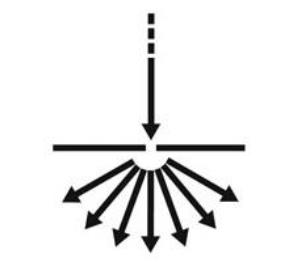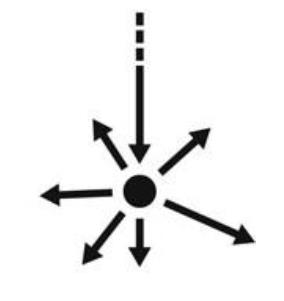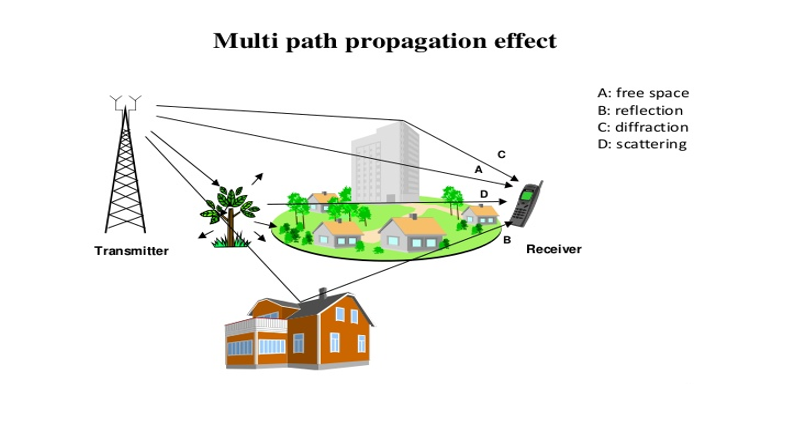PROPAGATION AND SIGNAL STRENGHT PREDICTION
In general the mobile radio signal is extremely variable. The mean signal strength will be constant only over relatively small areas, and will vary slowly as the receiver is moved. Superimposed on this slowly-varying mean is the fast fading which is caused by multipath propagation in the immediate vicinity of the receiver.
Reflection, diffraction, and scattering are the three basic propagation mechanisms that impact propagation in mobile communication systems. Reflection occurs when a propagating electromagnetic wave impinges upon an obstacle that has very large dimensions compared to the wavelength of the propagating wave.
During propagation, the electromagnetic wave usually encounters obstacles such as: walls, buildings, Earth's surface, water surface, etc. Depending on the reflecting surface (obstacle surface), the reflected signal suffers additional attenuation. If there is a large number of reflected signals at the receiving point, the received signal is very unstable.

Diffraction happens when, on the radio path between the transmitter and the receiver, the edge of an impenetrable obstacle, ie. an obstacle of sharp edges, is encountered, and the dimension of the object is significantly larger than the wavelength of the emitted electromagnetic wave. In diffraction, the electromagnetic wave "breaks" on the sharp edge of the obstacle and continues to propagate further weakened. The diffraction phenomenon enables signal transmission from transmitter to receiver, although there is an impenetrable obstacle between them and there is no direct optical visibility.

Scattering occurs when the medium through which the wave propagates consists of objects with dimensions that are small compared to the wavelength, and where the number of obstacles per unit volume are large. When an electromagnetic wave encounters such objects, the reflected energy is scattered in all directions. Obstacles of this type can be: traffic signs, lampposts, leaves, etc.

The multi path propagation effect is a propagation phenomenon which implies that electromagnetic waves reach the receiving antenna by multiple paths.

All these propagation phenomena have positive and negative effects on the signal propagation itself. The positive effects are reflected in the fact that in this way it is possible for the signal to reach the receiver, even when there is no optical visibility between the transmitter and the receiver, which actually enables propagation in an urban environment. Negative effects are when they lead to the fact that the signal at the reception is very unstable in space and time, and that instability of the signal, which occurs as a consequence of changing propagation conditions, is called fading. Propagation or prediction models can be deterministic (theoretical), statistical (empirical), or a combination of the two. Most propagation models are based on a combination of theoretical predictions and empirical data, ie. measurements. In mobile communications, the accuracy of signal strength prediction depends very much on propagation models by which the mean signal strength in any small area can be predicted. Propagation path loss model is fundamental method of predicting when dimensioning the mobile system. In simulations, RATEL uses: software package HTZ communications from the French manufacturer ATDI, 2 optimized prediction models, separately for low and high frequency bands, digital terrain model (DTM) map with 40x40m resolution and clutter map data with 20 clutter classess. Models were tuned to predict an average level of the field and do not contain any statistical or empirical margins. The main elements of the simulations are the following:
- free space attenuation
- diffraction losses (Deygout 94 method)
- subpath attenuation losses (Fine enhanced method)
- clutter penetration losses
Propagation path loss model is the fundamental method of predicting the range of a mobile system Anyway, it is worth pointing out that in reality adequate reception conditions require not only an acceptable signal, but also an acceptable carrier-to-interference ratio and carrier-to-noise ratio.

